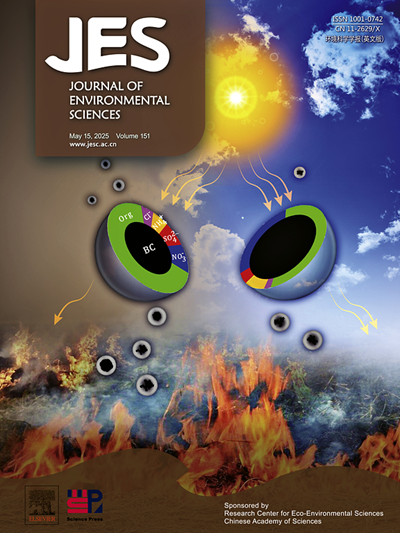Metals link to diabetes: Insights from a national cross‐sectional investigation
IF 5.9
2区 环境科学与生态学
Q1 ENVIRONMENTAL SCIENCES
引用次数: 0
Abstract
Diabetes and impaired fasting glucose (IFG) are significant global health concerns. However, the potential effects of mixed heavy metal exposure on these conditions remain underexplored. This study aims to investigate the combined effects of multiple metals on diabetes risk and explore the mediating role of Body Mass Index (BMI) in rural China. A cross-sectional analysis involved 2313 adults from 12 provinces in rural China. Urinary levels of zinc (Zn), chromium (Cr), nickel (Ni), cadmium (Cd), and lead (Pb) were quantified using inductively coupled plasma mass spectrometry. Fasting blood glucose (FBG) levels were measured with an automatic biochemical analyzer. Logistic regression models and the Bayesian Kernel Machine Regression (BKMR) model were used to examine associations and interactions. Mediation analysis was performed to assess the role of BMI. The results of our study indicate that there is a significant association between urinary Zn (OR = 2.38, 95 % CI: 1.57, 3.60), Cr (OR = 1.24, 95 % CI: 1.31, 1.61), and Ni (OR = 1.51, 95 % CI: 1.05, 2.18) and the diabetes risk. The study revealed that exposure to Ni amplified the associations between Zn, Cr and diabetes/IFG risk. Additionally, BMI was identified as a significant mediator in the relationship between metal exposure, particularly Cr/Cd, and diabetes risk. These findings reveal a complex link between multiple metals, such as Zn, Cr, and Ni, and diabetes risk, and emphasize the potential opposite mediating effects of BMI in different metal-induced diabetes mechanisms. Further investigation of these mechanisms is warranted.

求助全文
约1分钟内获得全文
求助全文
来源期刊

Journal of Environmental Sciences-china
环境科学-环境科学
CiteScore
13.70
自引率
0.00%
发文量
6354
审稿时长
2.6 months
期刊介绍:
The Journal of Environmental Sciences is an international journal started in 1989. The journal is devoted to publish original, peer-reviewed research papers on main aspects of environmental sciences, such as environmental chemistry, environmental biology, ecology, geosciences and environmental physics. Appropriate subjects include basic and applied research on atmospheric, terrestrial and aquatic environments, pollution control and abatement technology, conservation of natural resources, environmental health and toxicology. Announcements of international environmental science meetings and other recent information are also included.
 求助内容:
求助内容: 应助结果提醒方式:
应助结果提醒方式:


